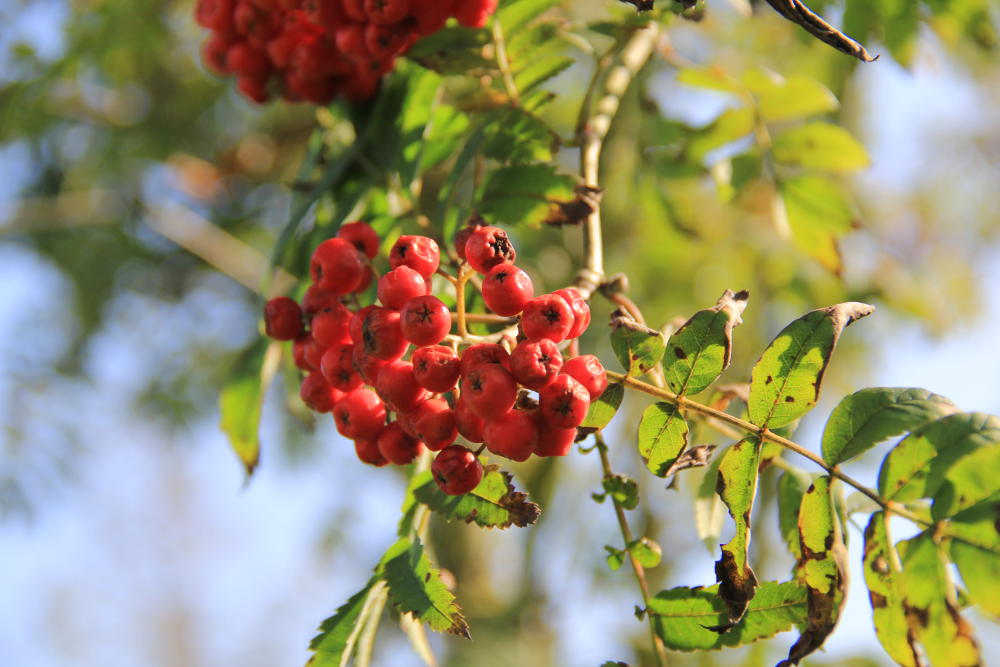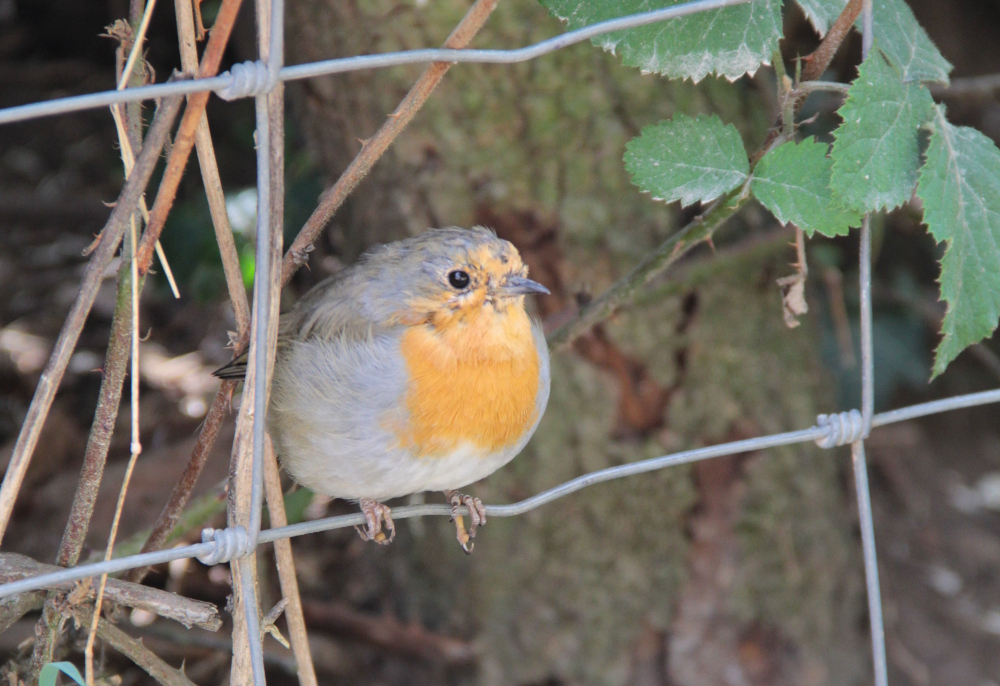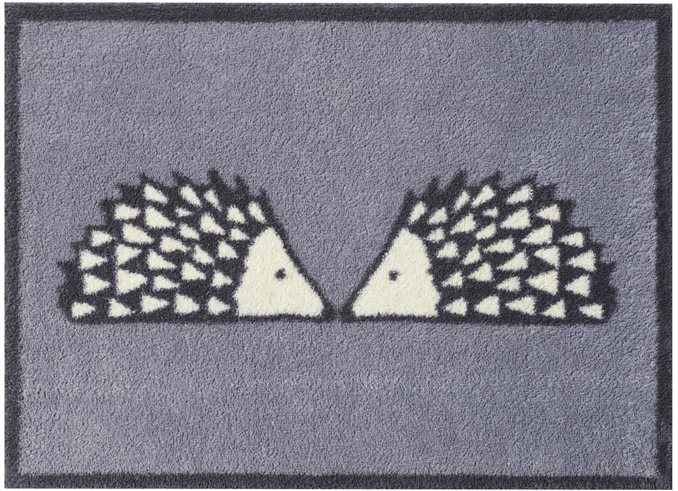After such a glorious summer allowing plenty of opportunity to spend time outside, many of us will have spent ample time out in the garden getting our hands dirty. As one of the warmest summers on record and in stark contrast to last year some of us might have even embarked on our first foray into gardening.
No amount of sunshine this summer has halted the sudden chill in the air however, so as winter rapidly approaches how can we prevent all our hard work being undone and keep our gardens beautiful over the colder months? Whether you’re wondering how to protect your veg patch and keep it fertile for next spring, pondering how to best safeguard your florals, or simply keep your garden beautiful and full of life, we spoke to four experts who gave us their tips on getting your garden ready for winter.
Of course, here at Turtle Mat, our biggest tip for getting ready for winter is to make sure that mud and dirt stay outdoors where they belong. The wetter colder weather makes having a good quality indoor mat and hard-wearing outdoor mat more important than ever! Read on to see what our experts recommend:
Autumn Gardening
 There are lots of steps gardeners should be taking now to ensure that all of this summer’s effort isn’t lost. Elspeth Briscoe from MyGardenSchool shared her top tips for this time of year:
There are lots of steps gardeners should be taking now to ensure that all of this summer’s effort isn’t lost. Elspeth Briscoe from MyGardenSchool shared her top tips for this time of year:
What steps would you recommend for gardeners at this time of year?
Autumn is a great time for those who love wielding the clippers – all that summer growth will need a trim back now to keep the garden tidy. But many off-cuts will strike well in the humidity right now so think about planting some of your cuttings into pots.
Remove plant debris and diseased leaves from flowers and vegetable patches. Dig up the annuals – plants that last only a season – and put them on the compost heap. Winter gives cuttings and leaves a chance to break down and produce nutrient-rich compost, which will be ready for boosting the garden in the new year.
Flowering perennials – plants that spring up year after year from their roots – should be cut back. Remove yellowing or dead leaves or flowers before rot develops, as well as any weeds hidden under the plant foliage.
How can you make sure the work you put in this year will still show by spring?
For a lovely lawn next spring, start to mow less frequently and raise the height of the grass as the growth rate slows down. Scarify your lawn by raking out dead grass and moss that has built up over the summer. Follow this with applying a high-potassium autumn lawn feed, which will release the correct balance of nutrients throughout the winter.
When there is no more need for garden furniture, store it in the shed or garage to protect it from the winter weather and allow it to dry out. If you can’t do this, cover it with a tough waterproof sheet securely fixed down, taking care to allow plenty of air to circulate so that the furniture is not damp all winter. Wooden items, such as benches or pergolas, may benefit from a treatment of chemical preservative.
Winter in the Veg Patch
The seasons may be changing and temperatures dropping as we hurtle towards the final furlong of 2013, but by no means will vegetable growers be packing away their forks and spades just yet. Lucy of the Smallest Smallholding showed us  there’s still plenty to be getting on with in November in the veg patch:
there’s still plenty to be getting on with in November in the veg patch:
What steps would you recommend for home-growers at this time of year?
Before the frosts arrive, it’s probably best to pull up the last of your more tender root vegetables and store them. Whilst some carrots can be left in the ground if covered properly, storing in sand will help to preserve them perfectly, giving you a winters’ supply of home-grown veg. Celeriac can be covered with straw until later in the season, leeks can be harvested into winter, and parsnips will actually benefit from the frosts. A frost converts the starch into sugars in the parsnip, making the root taste sweeter.
There are many vegetables and winter crops that can be sown or left to over winter – garlic can be planted in late October/early November, ready for harvesting in early summer. Brassicas – including Brussels sprouts, spring cabbages and broccoli – will be quite happy left in situ, but will need covering to protect them from foraging pigeons! Taller brassicas will also need staking, as gusty weather is more persistent at this time of year. Some autumn onion sets can go in during late October and early November for an earlier harvest next year.
Lastly, make sure you pack away any vegetable growing tools and sundries to protect them from the harsh elements.
How can you keep the ground fertile over the winter months and prepared for spring?
During the milder temperatures of mid-late autumn, it’s best to weed any empty areas of your plot, digging in some well-rotted manure and organic matter. This will break down over winter, helping to stabilise the soil structure and prepare beds for the following spring.
As the frosts and snow begin to arrive, there’s not much you need to be doing with your soil. In fact, the frosts, snow and ice will do a lot of the work for you; freezing the soil into clumps and then breaking it down when the temperatures begin to pick up again. With the addition of organic matter, this process helps to create that crumbly texture of loamy soil.
If your compost heap is open to the elements, you can help keep your compost ‘active’ over the winter by insulating the compost with layers of ‘brown’ matter like straw, leaves and dead plant cuttings – leave turning the pile until spring. The outside of the heap can also be insulated with old compost bags (with holes for ventilation!), cardboard or weed suppressant membrane.
Put in the work now, and you’ll reap the rewards come next year’s harvests.
Keeping your Garden in Bloom
 After a long, hot summer of being surrounded by beautiful plants and flowers, bare trees and empty flower beds is a rather gloomy prospect. Experienced garden designer Helen Ellison of Floral & Hardy gave us some recommendations on how to keep your garden in bloom, even in the winter:
After a long, hot summer of being surrounded by beautiful plants and flowers, bare trees and empty flower beds is a rather gloomy prospect. Experienced garden designer Helen Ellison of Floral & Hardy gave us some recommendations on how to keep your garden in bloom, even in the winter:
Which plants would you recommend to plant now?
Now is the ideal time to plant spring flowering bulbs such as Daffodils, Tulips, Convallaria (Lily of the Valley), Crocus, Galanthus (Snowdrops), Fritillaries and Hyacinths, as they will have time to develop roots before the soil freezes. Choose locations that will have full sun come spring.
For winter interest, pots and hanging baskets are ideal. Winter flowering Erica, Gaultheria Mucronata, Skimmia ‘Rubella’, Cyclamen, winter flowering Pansies, small-leaved and trailing Ivy are all great options for a splash of winter colour.
Aside from these, autumn is also a good time to plant deciduous hedges, shrubs and trees. Bare-rooted specimens are particularly good value. Evergreens are best left until the spring though.
How can these be best maintained over the colder months?
Once planted, bulbs should need no maintenance. Once the flowers have finished in the spring, leave the foliage on the plant for at least six weeks so that nutrients can be drawn back into the bulbs for next year.
In order to keep winter-interest planting looking good, simply dead-head faded flowers and take off any dead or damaged foliage. Remember to water pots in porches, etc.
If we get heavy snow, shake it off the branches of shrubs and trees in order to prevent damage.
Are there any actions that should be taken during the winter in preparation for spring to keep things beautiful?
After all leaves have fallen, be sure to rake them up and either place on compost heap in pierced black bags (to make leaf mould which can be used as a mulch), or get rid of them. This not only makes the garden look tidy but also reduces places for slugs and snails to hide.
Protect any tender plants from frost either by putting them in a greenhouse, or by mulching with straw. Covering the soil in this way will protect the roots of your plants.
Try to stay off planting beds and lawns in very wet weather so as not to compact the soil.
Accommodating Wildlife
Harsh weather can be a challenge for local wildlife and birds often seek refuge in our gardens. Clare Simm, of the British Trust for Ornithology’s Garden BirdWatch Project, offered us some great advice on how gardeners can help to support  garden birds during the coldest months:
garden birds during the coldest months:
What steps would you recommend for gardeners at this time of year to make their gardens bird-friendly over the winter?
Winter is a good time for pruning your trees and shrubs but don’t cut them all back – leave some to provide shelter and potential roosting sites for smaller birds. Birdboxes are also used in the winter to roost so, if they are unoccupied, make sure you’ve cleared out any old nests. If you don’t have nestboxes, now is a good time to put them up – many birds use the winter months to have a look for potential nesting sites for the spring.
Are there any winter plant choices that would encourage birds?
 This is a great time of year for planting for birds. Fruit and berry-bearing trees/bushes will provide food for birds during the winter as well as providing cover all year round. Native species that are good for birds include Rowan, Holly, Dog Rose, Hawthorn and Elder. Non-native species that are good include Cotoneaster and Pyracantha.
This is a great time of year for planting for birds. Fruit and berry-bearing trees/bushes will provide food for birds during the winter as well as providing cover all year round. Native species that are good for birds include Rowan, Holly, Dog Rose, Hawthorn and Elder. Non-native species that are good include Cotoneaster and Pyracantha.
What can gardeners do during the winter months to support bird populations?
Naturally available food can be scarce during the winter so help birds by putting out supplementary bird food. To attract a range of species, put out a range of different foods including seed mixes, peanuts (either chopped or in a peanut feeder with mesh) and fat cakes. Remember to keep your feeders clean to prevent the spread of disease between birds.
range of species, put out a range of different foods including seed mixes, peanuts (either chopped or in a peanut feeder with mesh) and fat cakes. Remember to keep your feeders clean to prevent the spread of disease between birds.
Water is very important during the cold months as a lot of natural sources freeze over. Provide a clean birdbath and make sure to break the ice if it freezes over.
How do you get your garden ready to survive the frost and freeze? Do you keep your garden beautiful over winter? Let us know in the comments below or on our Facebook or Twitter!











